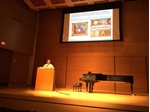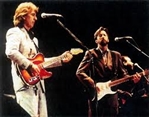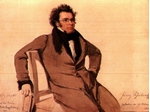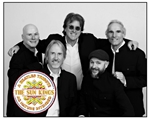- Register
- Log in to Tune-In
- Wishlist (0)
-
Shopping cart
(0)
You have no items in your shopping cart.
Beatles News

A motorcycle once owned by Beatles legend John Lennon has fetched a record-breaking £57,500 at auction.
The 1969 Honda Z50A Monkey Bike sold for almost double the estimated £30,000 when it went under the hammer at the National Motorcycle Museum in Solihull.
Lennon used the bike to get around his Tittenhurst Park estate in Berkshire, where he lived from 1969 to 1971.
It was sold by John Harington, who had owned it for 47 years and displayed it at various shows.
He bought the bike from Henry Graham, of Hook, Hampshire, who said he had bought the motorbike from Lennon when he was living at Tittenhurst Park.
The successful bid on Sunday is the highest price ever paid at a public auction for a Honda Monkey Bike.
Source: BBC News
details
The Beatles members forewent a journey of fame and fortune during their lives, but not without a struggle.
Visiting Scholar Walter Everett, Professor of Music Theory from the University of Michigan, gave a presentation March 6 about unfolding the psychology and success of the fab-four. Katie Kapurch, assistant professor of English, invited Everett to speak at Texas State. She met Everett at a Beatles conference at Penn State in 2014. She said after he read one of her publications, they decided to collaborate because they shared similar interests related to the representation of sex, sexuality and gender in pop culture.
Kapurch said they have contracted with Bloomsbury for a book with the working title, “Sex and Gender in Rock and Pop from the Beatles to Beyoncé”. The free co-sponsored event featured a presentation that delved into the composition of the 1967 single “Strawberry Fields Forever”. Everett has published an acclaimed two-volume book “The Beatles as Musicians” and stands at the forefront of scholarly research on The Beatles.
Source: Diana Furman/star.txstate.edu

The Beatles were arguably one of the greatest and most talented rock groups of all time. Consisting of John Lennon, Paul McCartney, George Harrison, and Ringo Starr, this unassuming quartet arguably changed the face of popular music completely thanks to the music they crafted during their nine-year stint.
But have you ever wondered how far the apple fell from the tree? With Ringo’s son, Zak Starkey, hitting up Melbourne for a couple of shows with his band SSHH this weekend, we’ve decided to take a look at the musical careers undertaken by the offspring of one of music’s greatest groups.
Source: Tyler Jenke/tonedeaf.com.au
details
As hairdresser to the Beatles in the 1960s, Leslie Cavendish was exposed to sex, drugs and rock n’ roll. However, working for Vidal Sassoon, the most famous hairdresser of the time, he was under strict instructions that the female clientele – including Jane Asher, Mary Quant and singer Shirley Bassey – were off limits. And drugs didn’t float his boat. But rock n’ roll and the Beatles were a dream come true.
Get The Jewish News's Daily Edition by email
and never miss our top stories Free Sign up!
In his recently-published book, The Cutting Edge: The Story of the Beatles’ Hairdresser Who Defined An Era, Cavendish (who is pictured below, strumming the Gretsch guitar John Lennon used during the recording of Paperback Writer), lifts the lid not just on Beatlemania, but also on popular culture in an era when the BBC only played “safe and proper” music by artists speaking “the Queen’s equerry”.
Source: By Alex Galbinski/jewishnews.timesofisrael.com
details
They have been madly in love for more than a decade. And keeping the romance alive, 75-year-old Paul McCartney enjoyed an intimate lunch with Nancy Shevel, 58, on Tuesday in Beverly Hills.
The casually-clad rocker shielded his eyes with a pair of sunglasses as he made a low-key exit from the eatery ahead of his wife.Read more:The casually-clad rocker shielded his eyes with a pair of sunglasses as he made a low-key exit from the eatery ahead of his wife. Meanwhile, Nancy cut a casual figure in a dark hoodie and cut-off trousers which she teamed with trainers for their afternoon date. The wife of the musician displayed her natural age-defying beauty when she scraped her brunette tresses into a bun and shielded her eyes with sunglasses.
Source: Daily Mail
details

As we've pointed out (over and over and over again), George Harrison and Eric Clapton continued to work together long after those mythic days of "Sour Milk Sea," "While My Guitar Gently Weeps" and "Badge." This is especially true of the early Seventies and the late Eighties, when Clapton appeared on Harrison's Cloud Nine (1987) and Harrison appeared on Clapton's Journeyman (1989). When the pair toured Japan together in 1991, Harrison's set was packed with a crowd-pleasing assortment of Beatles tunes (it was the first time Harrison had performed Beatles songs in Japan since 1966). Among the highlights each night was "Taxman," which originally appeared on the Beatles' Revolver (1966), and which the Beatles never performed live. Above, you can watch Harrison and Clapton tackle the classic Harrison-penned tune. If you like what you hear, track down the double album recorded during this tour, 1992's Live in Japan. It features live versions of other Beatles tunes, including "Piggies," "I Want to Tell You," "Old Brown Shoe," "If I Needed Someone," "Something" and "While My Guitar Gently Weeps."
Source: Guitar World
BROOKLYN, New York --
If you only listened to them, you might think you were listening to the Beatles themselves. But they are two twin brothers from Brooklyn, and their performances are sweet music to the ears of straphangers. Amiri and Rahiem Taylor are identical twins, born and raised in Bed-Stuy. The brothers are also featured in a viral video, that at last check had 18 million views. As children, their home was always filled with music, both jazz and classical.
But when their grandmother gave them a Christmas gift when they were about 15 years old, their musical world expanded. The teens became obsessed with the Beatles rock band video game and fell in love with the group's universal sound. Amiri and Rahiem also write and produce their own music and are half of the group Blac Rabbit, a psychedelic rock band. About three years ago, the brothers wanted to go visit their mom in Puerto Rico but didn't have enough money.
Source: Kemberly Richardson/abc13.com

I have to quibble with the “modern Schuberts” moniker. As gifted of tunesmiths as Paul, John & co. were, they don’t compare to Schubert or any other classical master. There is an immense gulf in the level of craftsmanship between, say Schubert’s 9th Symphony and Sgt. Pepper (especially as the craft in that album largely came from George Martin). The Beatles main schtick was introducing more diatonic, folk-influenced melodies and harmonies to the largely blues / rockabilly based popular music of the late 50’s & 60’s. But the comparison with classical music is off base. The Beatles are no more the modern Schuberts as Cole Porter is the modern Bach or Burt Bacharach is the modern Beethoven. They are all very talented musicians, but I would look to composers such as Part, Schnittke, Penderecki, post-war Stravinsky or Wuorinen (all either Catholic or Orthodox and significant composers of sacred music by the way) as my candidates for the “modern Schubert”.
Source: Dave Armstrong/patheos.com
< details
The Sun Kings’ motto is “A Beatles Tribute as Nature Intended.” Eschewing costumes, wigs, mustaches or faked accents, the San Francisco Bay Area-based band focus on capturing the essence of the Beatles and faithfully recreating their music on stage.
On March 10, 2018 at the Downtown Theatre in Fairfield, they will celebrate the 50th anniversary of the release of “The Beatles,” the so-called White Album, by performing it live in its entirety, in record order. The Sun Kings are Drew Harrison as John Lennon (vocals, rhythm guitar, percussion), Scott Southard as Paul McCartney (vocals, bass guitar, piano), Bruce Coe as George Harrison (lead guitar, keyboards, vocals) and Steve Scarpelli (drums, percussion, vocals).
While the real Beatles had a number of people sometimes referred to as the unofficial “5th Beatle” ranging from their producer Sir George Martin to musician Billy Preston, The Sun Kings have an actual full-time 5th Beatle, Michael Barrett as the orchestrator (keyboards, harmonica, percussion, vocals).
Source: Tony Wade/dailyrepublic.com
